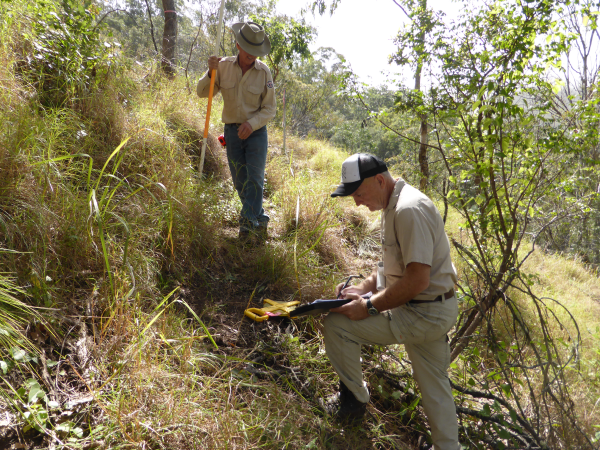A good time for vegetation monitoring!
09 Sep 2022
How good is Spring on the North Coast?! The weather is pleasant and plants are flowering, so there's no better time than now to get outside and learn about your local environment .
Why monitor native veg?
Knowing your local vegetation means you can identify natives and differentiate them from invasive weeds.
Spring is a great time to improve your identification skills and learn about what is growing in your local area. Some plants in flower may not be native and will need controlling before they fruit and re-seed over the coming months.
The following online resources and mobile apps have information specific to the North Coast:
Native veg and wildlife
Native wildlife rely on living and dead native vegetation as habitat. Documenting changes in the local vegetation is a good way to determine whether there is sufficient habitat for these species. Not only is this easy, it is also a great way to track the condition and structure of plants in the area, and is especially relevant following extreme events like bush fires or floods.
Where to start?
Start by marking fixed locations with star-pickets. Choose locations that show different vegetation types/stages of improvement and mark them as ‘photo-point1', 'photo-point2' etc.
At consistent intervals (for example, every 6 months) take photos of your marked locations and then compare the photos, noting any key changes. Based on the changes you can then choose to adjust your management actions and levels of commitment - either do more (if weeds are expanding) or target different weed growth forms (if there is overshading of groundcovers by shrubs or trees become covered by vines).
For the more technically adventurous enthusiast, you can do a full plant survey using a 20 metre tape measure. This is done by designating a rectangular vegetation plot where you record all the details of plants and vegetation layers in the allocated area.
For more information about these methods visit the NSW Vegetation monitoring Interim Type Standard (pg. 59-63) or the Vegetation Survey and Assessment Guide.
If you are interested in restoring native vegetation on your property, you can visit your local Landcare website or office for native vegetation planting guides so you know what to plants belong in your area.
Carrying out vegetation monitoring as a Landholder makes you a Citizen Scientist and is a good way to be part of an online community.
